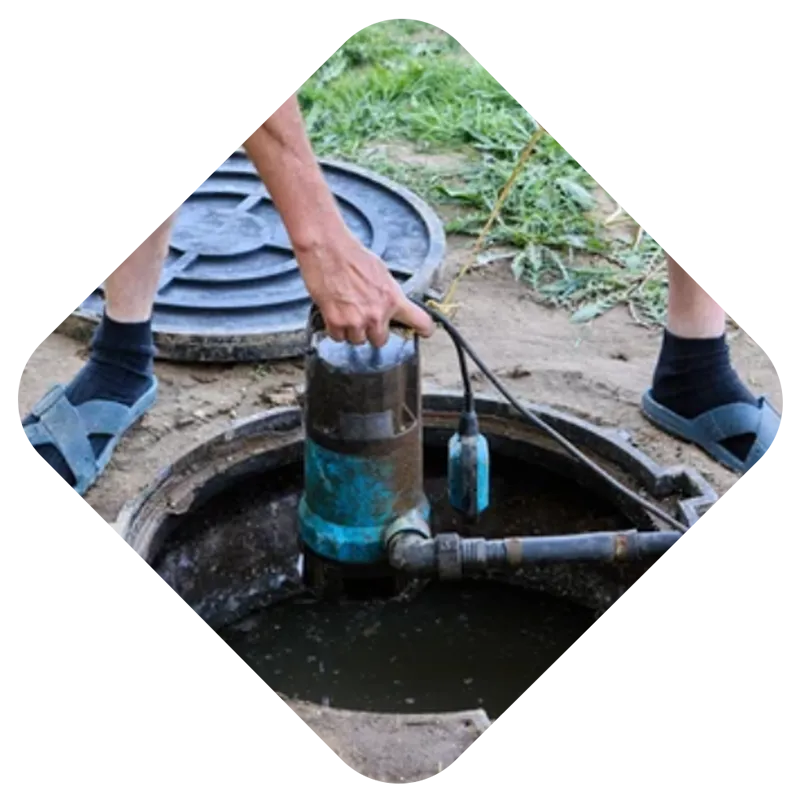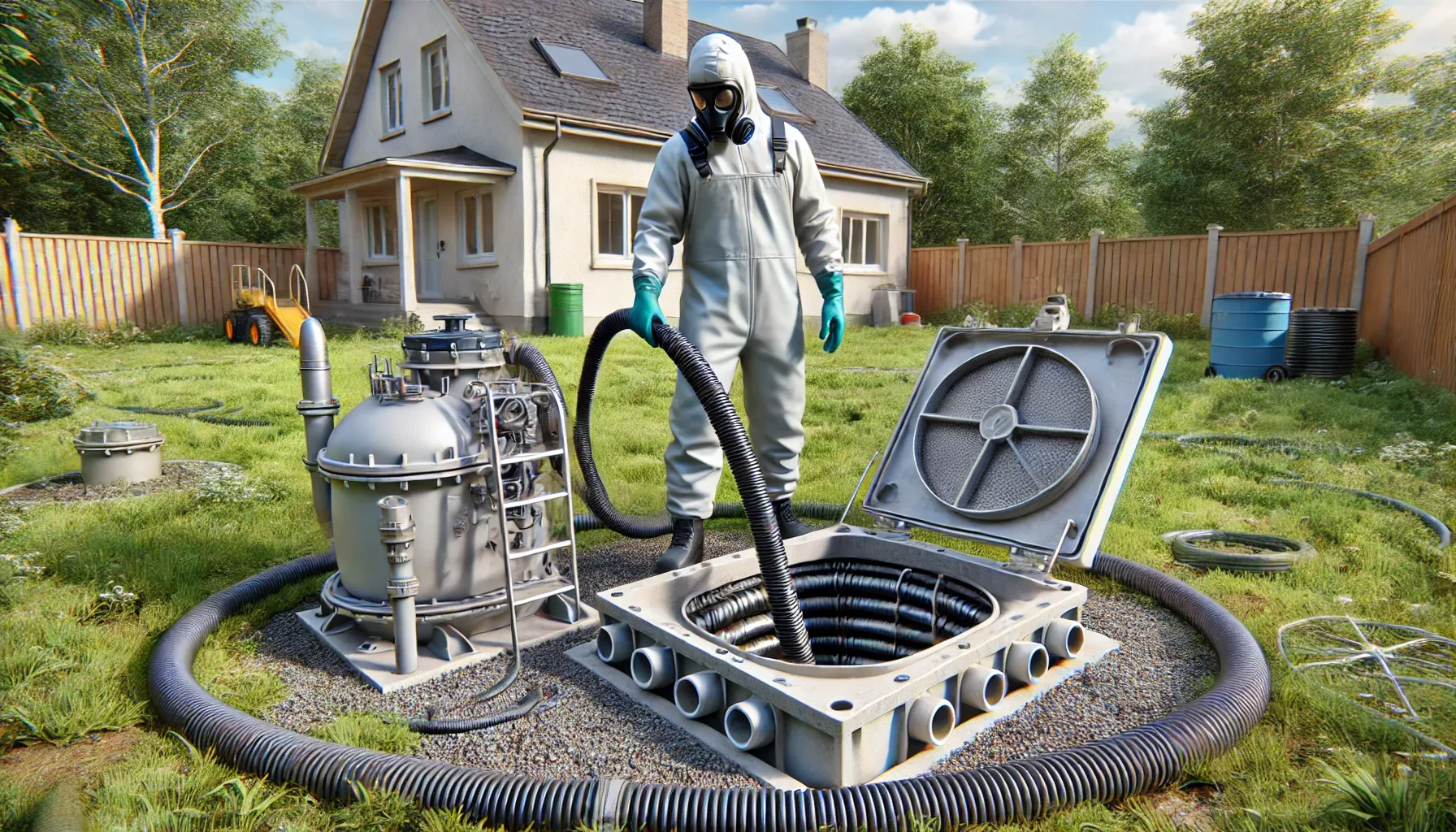
How Often Should a Septic Tank Be Pumped? Quick Answer + Essential Tips

How Often Should a Septic Tank Be Pumped?
If you have a septic tank, you’ve probably wondered, “How often should I pump my septic tank?” Regular pumping is essential for keeping your system healthy and preventing big problems. While the standard recommendation is to pump every 3 to 5 years, the actual frequency depends on things like household size, tank capacity, and how much water you use.
In this guide, we’ll break down everything you need to know about septic tank pumping frequency, including key factors that influence it and signs your tank may need pumping sooner. By understanding these basics, you can help your septic system last longer and avoid costly repairs.
How Often Should a Septic Tank Be Pumped? Quick Answer
The short answer: Most septic tanks need to be pumped every 3 to 5 years. This general rule covers average households and tank sizes, but some situations call for more frequent pumping.
For example:
Larger Households: If you have a big family, you may need to pump every 1 to 3 years since more people means more waste.
Smaller Households or Low Water Usage: Smaller homes with fewer residents or low water use can often go up to 5 years between pumpings.
Regular pumping keeps your tank from filling up too quickly, which helps prevent backups and protects the drain field. Now, let’s explore the main factors that affect how often your tank should be pumped.
Key Factors That Influence Pumping Frequency
Several factors can affect how often you’ll need to pump your septic tank. Here’s a breakdown of the main ones:
Household Size
The number of people in your home directly impacts how fast your septic tank fills up. More residents mean more wastewater, which leads to faster accumulation of solids in the tank. For larger households, consider scheduling pumping more frequently—every 1 to 3 years instead of waiting the standard 3 to 5 years.
Septic Tank Capacity
The size of your septic tank also plays a role in how often it needs to be pumped. Smaller tanks fill up faster, especially in homes with high water use. If you have a larger tank, it may handle waste longer before reaching capacity, allowing you to extend the time between pumpings. Check your tank’s size to see how it aligns with your household’s needs.
Water Usage Habits
High water use fills up a septic tank more quickly. Activities like frequent laundry loads, long showers, and running multiple appliances at once all increase water flow into the tank. To reduce the need for frequent pumping, try to space out water-heavy activities and consider water-saving fixtures.
Garbage Disposal Use
If you regularly use a garbage disposal, your septic tank will accumulate more solids, since the disposal adds food waste to the tank. This can mean you need to pump more often—sometimes as frequently as once a year. Homes that avoid garbage disposals or limit their use can generally extend the time between septic tank pumpings.
Age of the Septic System
Older septic systems may require more frequent maintenance, especially if they haven’t been regularly serviced. Over time, older tanks can develop issues that cause solids to build up faster or clog the system, leading to more frequent pumping needs.
Type of Soil in the Drain Field
Soil that drains poorly can lead to a slow-draining septic system. When the soil doesn’t absorb wastewater efficiently, it can put stress on the tank and cause it to fill up faster, requiring more frequent pumping.
Use of Septic Additives
Some people use additives to break down waste in the tank, but the effectiveness of these products is debated. Relying on additives can lead to under-pumping, which may cause issues in the long run. It’s best to stick with regular pumping, regardless of additive use.
Each of these factors plays a role in how quickly your tank fills up. Understanding these can help you set a schedule that keeps your system in top shape.
Signs That Your Septic Tank Needs Pumping Now
Knowing the signs of a full septic tank can help you avoid emergencies and protect your system. Here are some key indicators that it may be time to pump your septic tank:
Slow or Gurgling Drains
If your sinks, showers, or toilets start draining slowly, it’s often a sign that your septic tank is nearing capacity. Gurgling sounds in your plumbing can also indicate that waste is struggling to pass through, which is a clear sign the tank may be too full.
Unpleasant Smells Indoors or Outside
Foul odors coming from drains, toilets, or even the yard can signal that your septic tank is full. When waste reaches the top of the tank, gases escape and create these unpleasant smells. If you notice this, it’s time to schedule a pumping before the problem worsens.
Pooling Water in the Yard
Standing water or muddy areas around the drain field often indicate that your septic system is overwhelmed. When the tank is full, wastewater can overflow into the yard, creating soggy spots or pools. This is a sign of an urgent need for pumping, as it can lead to system damage and health risks.
Toilet Backups or Overflow
Wastewater backing up into your toilets, tubs, or sinks is one of the clearest signs of a full septic tank. This issue requires immediate attention, as it can lead to unsanitary conditions in your home and potential damage to your plumbing system.
Green, Lush Patches Over the Drain Field
If the grass over your drain field appears unusually green or lush, it may mean that the septic system is leaking or overflowing. Extra nutrients from the wastewater can create these greener patches, signaling that the tank needs pumping.
Higher Nitrate Levels in Nearby Well Water
For homes using well water, elevated nitrate levels can sometimes indicate that waste is leaking from the septic system into the surrounding soil. While less common, this sign is important for households with wells, as it affects water safety.
Helpful Maintenance Tips to Avoid Frequent Pumping
Regular maintenance goes a long way in keeping your septic system running smoothly and reducing the need for frequent pumping. Here are a few simple tips to help you extend the time between services:
Avoid Flushing Non-Biodegradable Items
Only flush toilet paper and waste. Things like wipes, feminine hygiene products, and diapers do not break down in the tank and can cause blockages. Even “flushable” wipes can create buildup and should be kept out of your septic system.
Be Mindful of Water Usage
Spreading out heavy water use can help your septic tank manage wastewater more effectively. For example, doing multiple loads of laundry or running the dishwasher several times in one day can overload the tank. Try to space these tasks out to give your septic system time to process waste.
Limit Garbage Disposal Use
Using a garbage disposal adds more solid waste to your septic tank, filling it faster and leading to more frequent pumping. If possible, compost food scraps or throw them in the trash instead of using the disposal.
Use Water-Saving Fixtures
Installing water-saving devices like low-flow toilets, faucets, and showerheads reduces the amount of wastewater flowing into your tank. Less water means the tank doesn’t fill up as quickly, extending the time between pumpings.
Regularly Inspect Your System
Having a professional inspect your septic system every few years can help catch issues early. Inspections often reveal signs of wear, small leaks, or buildup that you may not notice otherwise. Regular check-ups keep your system working efficiently and can prevent costly repairs.
These small changes in your daily routine can make a big difference in maintaining a healthy septic system and extending the time between pumping services.
FAQs About Septic Tank Pumping Frequency
How much does septic tank pumping cost?
The average cost of septic tank pumping is typically between $250 and $500. However, this can vary based on factors like the size of your tank, your location, and the condition of the system. Routine pumping costs much less than emergency repairs or drain field replacements, making it a worthwhile investment.
How long does septic tank pumping usually take?
Pumping a septic tank generally takes between 1 to 2 hours. The time depends on tank size, accessibility, and the amount of buildup. Smaller tanks or those with easy access can be done quickly, while larger or hard-to-reach tanks may take a bit longer.
Can I pump the tank myself, or do I need a professional?
Septic tank pumping requires specialized equipment and expertise, so it’s best left to professionals. Attempting to pump a septic tank on your own can be dangerous, as exposure to toxic gases or improper disposal can lead to health and environmental hazards.
What should I do if I forget to pump the tank?
If you forget to pump your tank and notice signs of a full system—like slow drains, odors, or yard puddles—schedule a pumping as soon as possible. Ignoring these signs can lead to severe issues like backups or drain field damage, which are costly to fix.
Conclusion
Regular septic tank pumping is crucial for keeping your system in good working order. While the typical recommendation is every 3 to 5 years, factors like household size, water use, and tank capacity can affect how often you need to pump. By paying attention to signs of a full tank and following simple maintenance tips, you can avoid costly repairs and keep your septic system running smoothly for years.
For reliable septic tank service, reach out to Jones Septic Tank Cleaning in Tomball, TX. Their team specializes in septic tank cleaning and pumping, ensuring your system stays in top shape. Schedule your next service with Jones Septic Tank Cleaning for a hassle-free and professional experience.